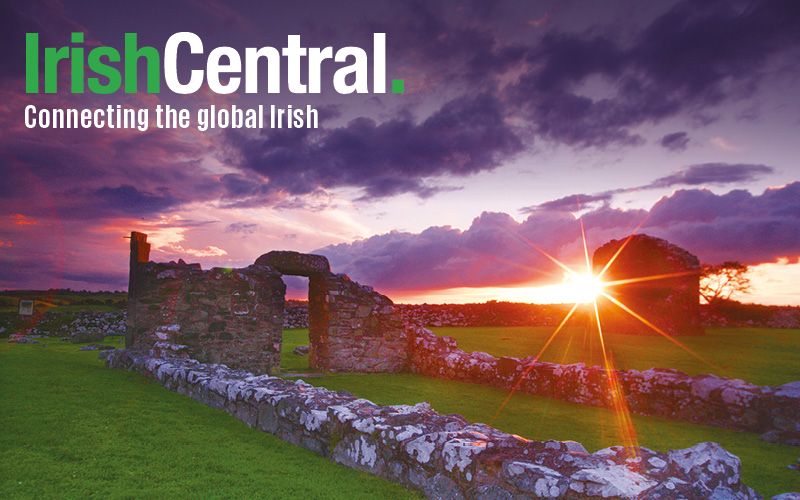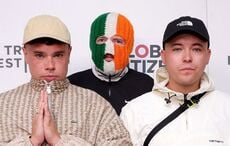Today is Tap dancing day! Here at IrishCentral we're often asked what's the relationship between Irish dance and tap. So here it is from Riverdance and Irish step dancing to the Sean nós style - here's how to know your jigs and reels from your heel-toe 1,2,3s.
Like many forms of Irish traditions passed down through the centuries, it can be difficult to pinpoint the exact origin of Irish dancing as we know it now.
Historians suspect that the first practitioners of "damhsa na hÉireann" were, in fact, the Druids, the highly esteemed cultural class that inhabited Ireland as early as 3bce. It is believed that these mystical people would dance to honor the oak trees and sun in religious rituals.
Ancient Irish Druids gathered in a woodland. (Image via Flickr)
When the Celts arrived in Ireland circa 400AD from Central Europe, they brought with them a distinct type of folk music and dance. Similarly, the Anglo-Normans who landed on Irish shores in the 12th Century brought with them their own customs and styles of song and dance. The Carol is one of the earliest recorded dances; the Anglo-Normans would perform it when they conquered an Irish town.
Noted Irish dances from the 16th Century - the Rince Fada, the Irish Hey, and the Trenchmore - are similar to what we now know as jigs, and were performed by "girls in beautiful dresses."
Keep up-to-date with all things Irish dance on IrishCentral here
In fact, the costumes worn by Irish dancers today pay tribute to the clothing of past dancers. Each school of Irish dance has its own distinct costume, often incorporating embroidery, Celtic symbols, capes, and brooches.
When it comes to the rich history of Irish dance - there is a lot to take in. So, we've compiled a "cheat sheet" of sorts for you to tell different forms and styles apart.
Irish Stepdance/Irish Dancing
Irish stepdance, or Irish dancing, is the style of performance most commonly recognized all over the world, thanks to its distinct costumes and footwork.
Since an infamous 1994 Eurovision performance, the world-renowned Riverdance troupe has greatly contributed to the international popularity and appeal of Irish step dance.
For the last few centuries, especially during turbulent political and social times, Irish stepdance has become an integral part of fostering community spirit, national identity, and cultural pride.
Read more: Riverdance changed Irish dance forever
In the above video of Jean Butler and Michael Flatley's groundbreaking performance, you will see many aspects of traditional costume like the hard shoes, akin to tap dancing shoes, the silk shirt, and the tight ringlet curls. However, the emergence of Riverdance signified an irrevocable change in the "look" of Irish dancing. Suddenly, understated and demure outfits and black tights had infused Irish dance with a modern, sleek sensibility.
Some 25 years later, the popularity of Riverdance has not abated. In fact, it is often credited for bringing Irish dancing to the attention of a global audience.
Read More: Dublin to get Riverdance academy as Irish dance phenomenon turns 25
Sean nós Dancing
Sean nós quite literally refers to what it means in English - old style. It is distinctly different from the aforementioned form of Irish dancing due to its casualness, "low to the ground" footwork, and freer movement of the arms.
With sean nós, there are no distinctive costumes and dancers do not take part in large scale competitions. It is often performed as an improvisation, at say a céilí or a seisiún on a wooden floor.
It is believed that sean nós originated in Connemara, Galway. It is the style of Irish dance that influenced modern tap dance. However, sean nós dancers simply wear leather soled-shoes instead of metal tips.
Sean nós is not as common in the US now as it was among Irish immigrants at the turn of the century. However, small sean nós dancing communities still exist in Boston, Philadelphia, Baltimore, Washington D.C., Seattle, New York, and Portland, Oregon.
If you're curious about sean nós; the video below features a "flash mob" style performance and gives a good indicator as to how it's done.
Frequently Asked Questions
Why do Irish dancers not move their arms?
It is genuinely believed that little upper body movement stems back to times when dancers had limited space to move around in - think small rural pubs or barns crowded with enthusiastic dancers!
What is the difference between the shoes?
Soft shoes are worn for reels, slips, light jigs, and single jigs. Hard shoes are worn for hornpipes, treble jigs, and treble reels.
Soft shoes worn by female dancers are like ballet shoes and are called ghillies. Hard shoes have tips and heels made of fiberglass to add noise to a performance. Males have their own version of a soft shoe, known as reel shoes, which still have a slightly harder heel than a ghillie.
Some of the most popular brands for Irish dance shoes are Inishfree, Rutherford, and Hullachan.
Why do Irish dancers wear wigs?
According to John Cullinane - author of “Irish Dancing Costumes: Their Origins and Evolution With 100 Years of Photographs, 1892-1992" - wigs only came part of the costume in the 1980s.
Cullinane states that in the 1960s, the dancers sought to have their hair in natural ringlets. (Anyone who went to an Irish primary school will likely remember the dancers coming in with their hair in rags and bendy rollers!)
Sleeping on these beds of rollers and curling devices became so frustrating, that someone came up with the idea of wigs. However, it didn't take long before they became bigger and more elaborate - essentially, another way to compete, albeit aesthetically, with rival dancers.
Read more: Can Irish dance be an Olympic sport?
* Originally published in Feb 2018.




Comments